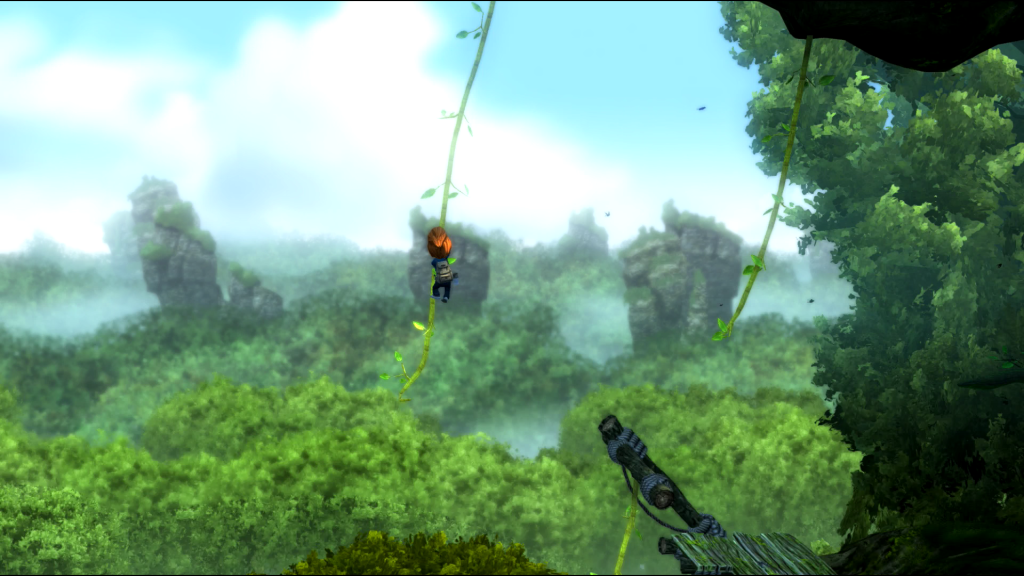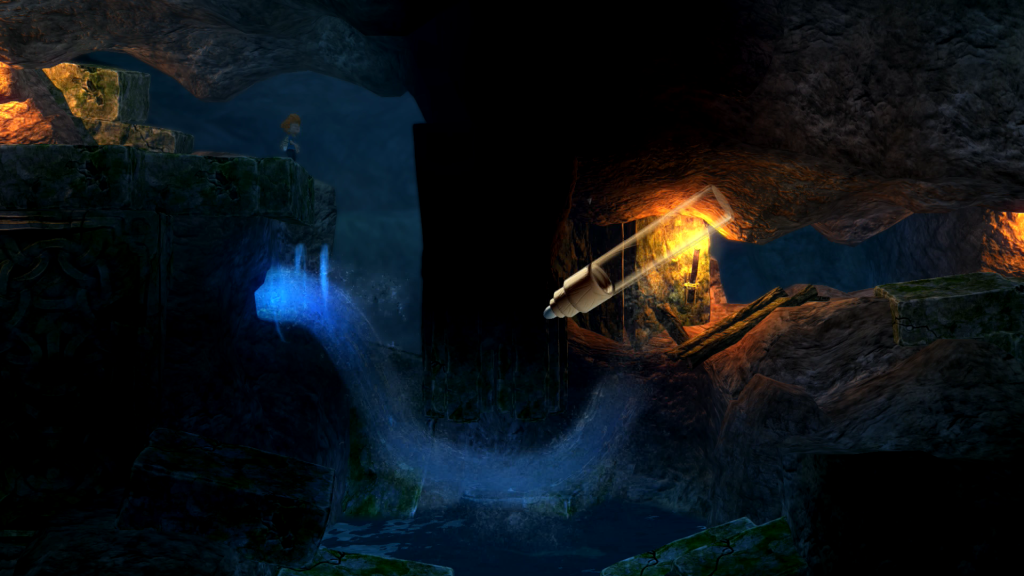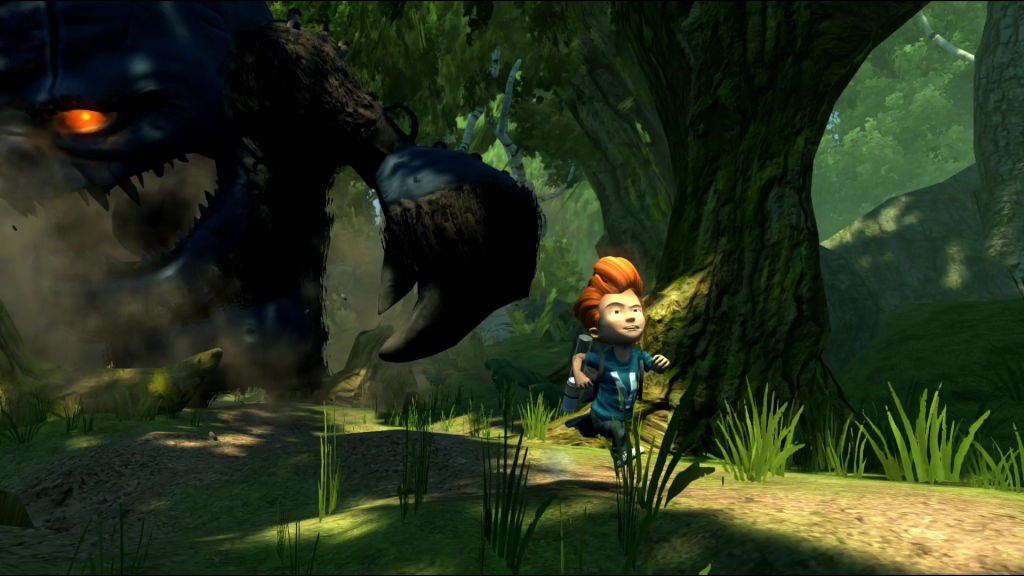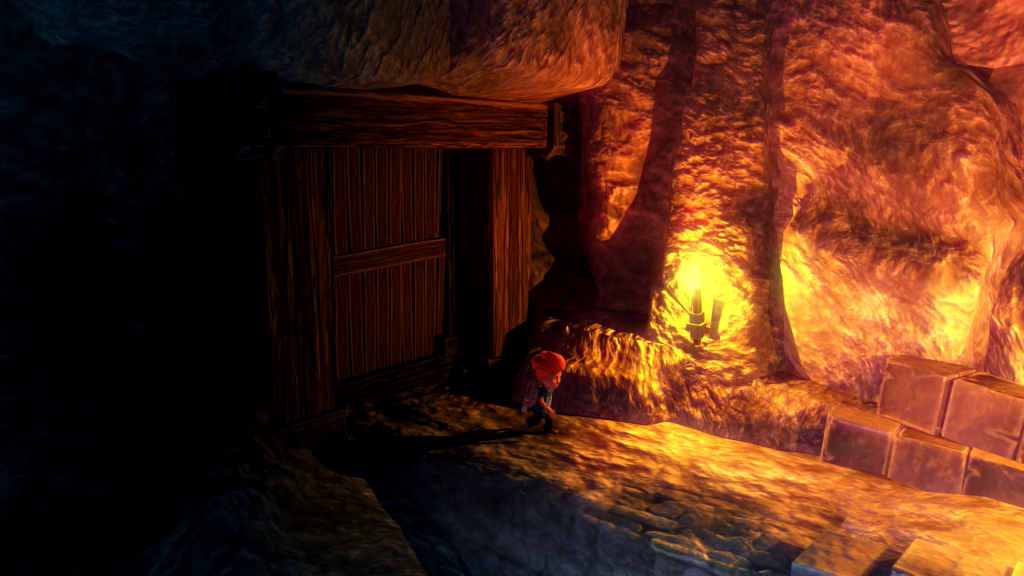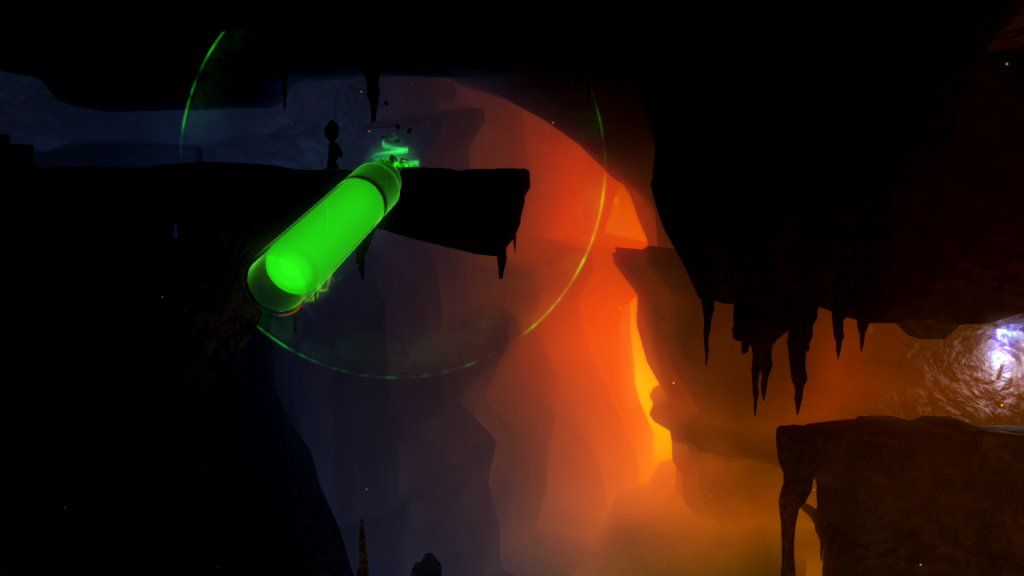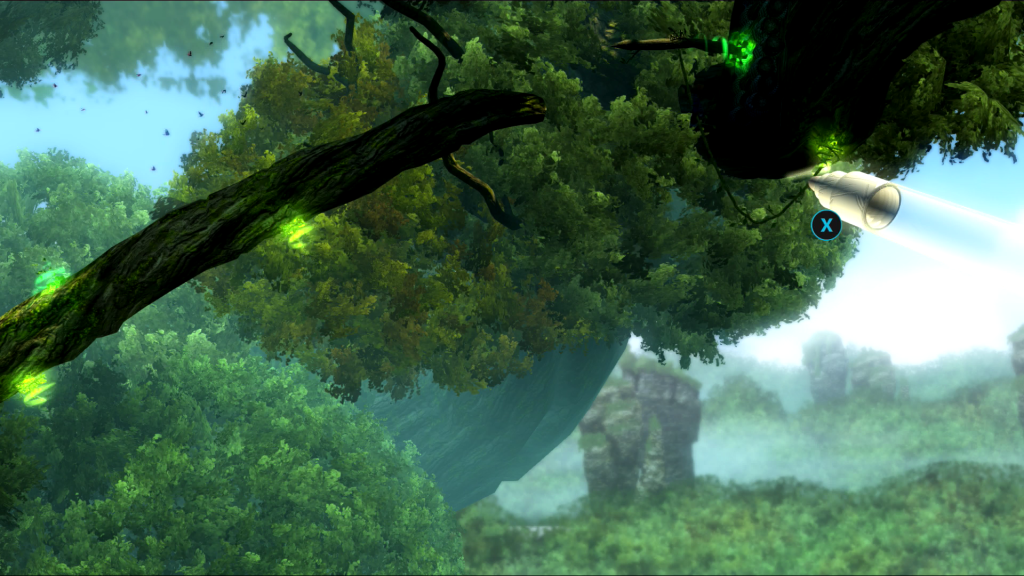 A review of Max: The Curse of Brotherhood from Press Play, on Xbox One, Xbox 360
A review of Max: The Curse of Brotherhood from Press Play, on Xbox One, Xbox 360
When Max comes home to find his little brother, Felix, playing (rather aggressively) with Max’s toys, Max reaches his last straw and decides to run a web search on “How to make your brother disappear!” He finds an incantation that, when recited, summons a portal and seconds later Felix is gone.
Max has a rather instantaneous change of heart and jumps in after Felix and his monster captor. This brief cutscene is all you get before jumping into Max’s beautiful adventure. The gameplay starts soon after and has you control Max in an effort to bravely acquire Felix from the evil kidnapper that has claimed him, the mustachioed Mustacho.
Gameplay
The story is light and serves as a purpose to the gameplay, which varies from simple platforming, to a complex combination of platforming, reflexes, and dexterity.
Move Max left, right, and crouch, with the left thumbstick. “A” jumps, “X” pulls and pushes objects to reposition them. “Y” acts as a specific interaction button as well. That’s it for Max, there are a different set of controls for his “weapon”.
Armed with a truly ‘Magic’ Marker, Max will draw pillars from the ground, create branches and vines from crags in rocks. While holding the Right Trigger, you will enter the draw mode. Left thumbstick now controls the marker, A to draw, X to erase, and you are now caught up with the entirety of the control scheme. But just because the game doesn’t make use of the bumpers, d-pad, or B button, that doesn’t mean there isn’t much to do. In the draw mode, you can point your marker to select places on the screen and create an object at that point. The ‘aura’ on the screen lets you know how tall or long the object can be, with the level designers specifically limiting the length to suit the puzzle (can’t have it being too easy now).
See an orange spot on the ground? Click A and pull up a pillar of earth to stand on. See a green glowing spot on the wall? Extrude a branch from it.
Anyone who has played Playdead’s Limbo and Max can see some similarities. The camera style and protagonists’ ages, genders, and to some extent obstacles share some common ground. Press Play and Playdead even shared a building at one point. But whereas the wonderful Limbo maintained a dark mood featuring subtly gruesome, if colorless, death heaped upon death. Max adventures through a vibrant world of color and experimentation. If you enjoyed the gameplay of Limbo, it’s likely that you will enjoy the gameplay of the more family-friendly Max. Oh, you will still die, a lot. But I found myself wincing less at Max’s demises than the boy in Limbo’s. Maybe it’s the color.
Throughout the game there are 75 “cameras” that you can “disable”. These seeing eyes are Mustacho’s way of spying on you. There are also missing amulet pieces that will keep you hunting for more more replay value. It’s often that these “side quests” let you feel the most like you are solving puzzles with pieces that you created. Using your Magic Marker to draw a branch with just the right curve, and then cutting it at just the right spot, allowing you to drag into just the right position to act as a ramp to access an otherwise inaccessible area, this is what makes Max’s adventure feel unique. In this way it borrows elements from Crayon Physics.
And the physics are quite serviceable. Minor touches impress. Tree branches keep their basic shape with a substantial amount of rigidity, but still flex under their own weight and from Max’s influence. Branches also float convincingly enough. Ropes and vines have a significant amount of joints so they bend realistically. Controlling Max also feels right as his jump height and speed seem plausible. Since this is a physics-puzzle adventure game, it’s important that the physics feel right, and fortunately they do.
There were just a few puzzles that had me frustrated, not because I didn’t know what to do, but because I didn’t know what I was doing wrong. One such puzzle had me repeating variations on the same basic sequence but each resulted in death. When I finally did pass the section, I wasn’t satisfied with how I did. I didn’t learn anything from my failures or my success.
The different environments keep things fresh and new environments present new dangers and delights.
Graphics
I have already started gushing about the graphics in the Gameplay section. That’s how much I enjoy the look of this game, my enjoyment leaks into other sections of the review.
Max: The Curse of Brotherhood looks like it could have been a Pixar movie. Quite reminiscent of Up, the art style in Max is quite stylized, and definitely more along the lines of the computer generated stylings of Jimmy Neutron: Boy Genius than the cel-shaded look or hand-drawn animation.
The colors! The eye-popping colors are visually pleasing, and coupled with the gorgeous real-time lighting and smooth frame-rate in game, you’ve got a very pretty picture. There is an inconsistency in smoothness when in cutscenes. The cutscenes in Max are almost invariably choppy, while the gameplay sequences are typically very smooth.
Max seems to be more ‘living’ than I’m used to seeing in a game’s protagonist. A typical adventure game features a mostly static character, with just enough animations to properly convey the gameplay elements. But Max has emotion, his face wrinkles to show frustration, stretches to show surprise, twists to show fear. There are moments where I wish I could pause the gameplay and free aim the camera to show grab a screenshot, or even to save as a desktop wallpaper. But such a feature doesn’t seem to be available to me.
Sound
Max is always letting you know that he’s there with groans and yelps. Occasionally letting out a “Whoa!” “Cool.”, “That was easy.” or other exclamation, and always relevant to the context of what he happens to be experiencing at the moment. The voice acting on Max is simple, but it’s sincere, and I enjoy the variety of quips and phrases little Max lets out.
The monsters all sound ‘believable’ as well, except for the one that periodically sounds exactly like Chewbacca, he’s a bit distracting.
The music is thematic and cinematic and borderline minimalist. It never gets in the way of the experience sits in the mix nicely allowing the tension to be felt from the current quandary, rather than forcing it through audio texture.
Final Thoughts
My daughter is 5 and enjoys watching me play. Max: The Curse of Brotherhood is rated 10 and up, but I’d say it’s safe for all but the youngest children.
The game goes for $15 and I think it deserves it. There is no multiplayer of any kind, and there is limited replay value beyond collecting all the hidden items, but the art style and gameplay make for a visually entertaining experience that is easily shared with spectators. It could be considered a bit short, but it’s a delightful and quality filled time spent with Max and his Magic Marker.
Four out of Five
